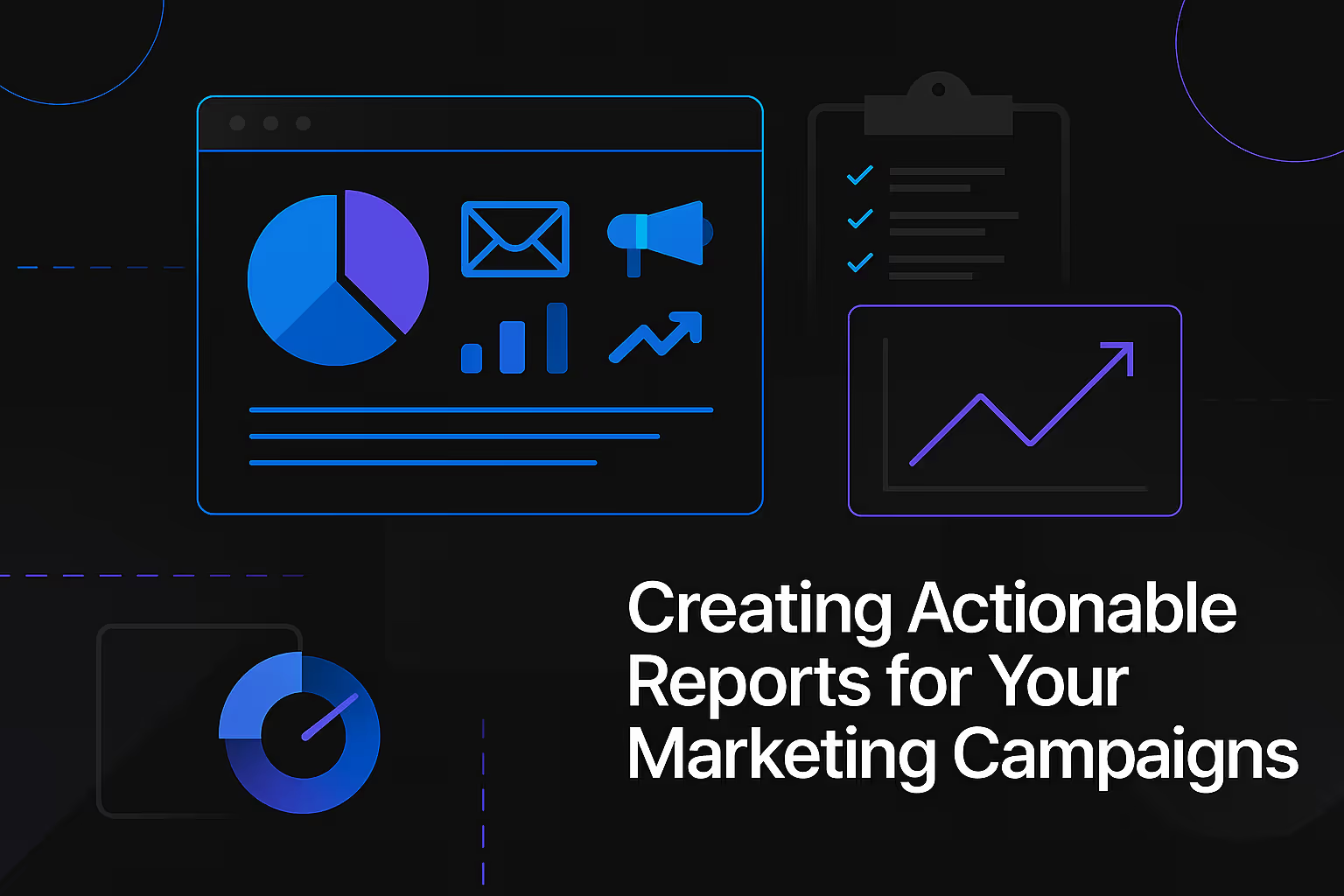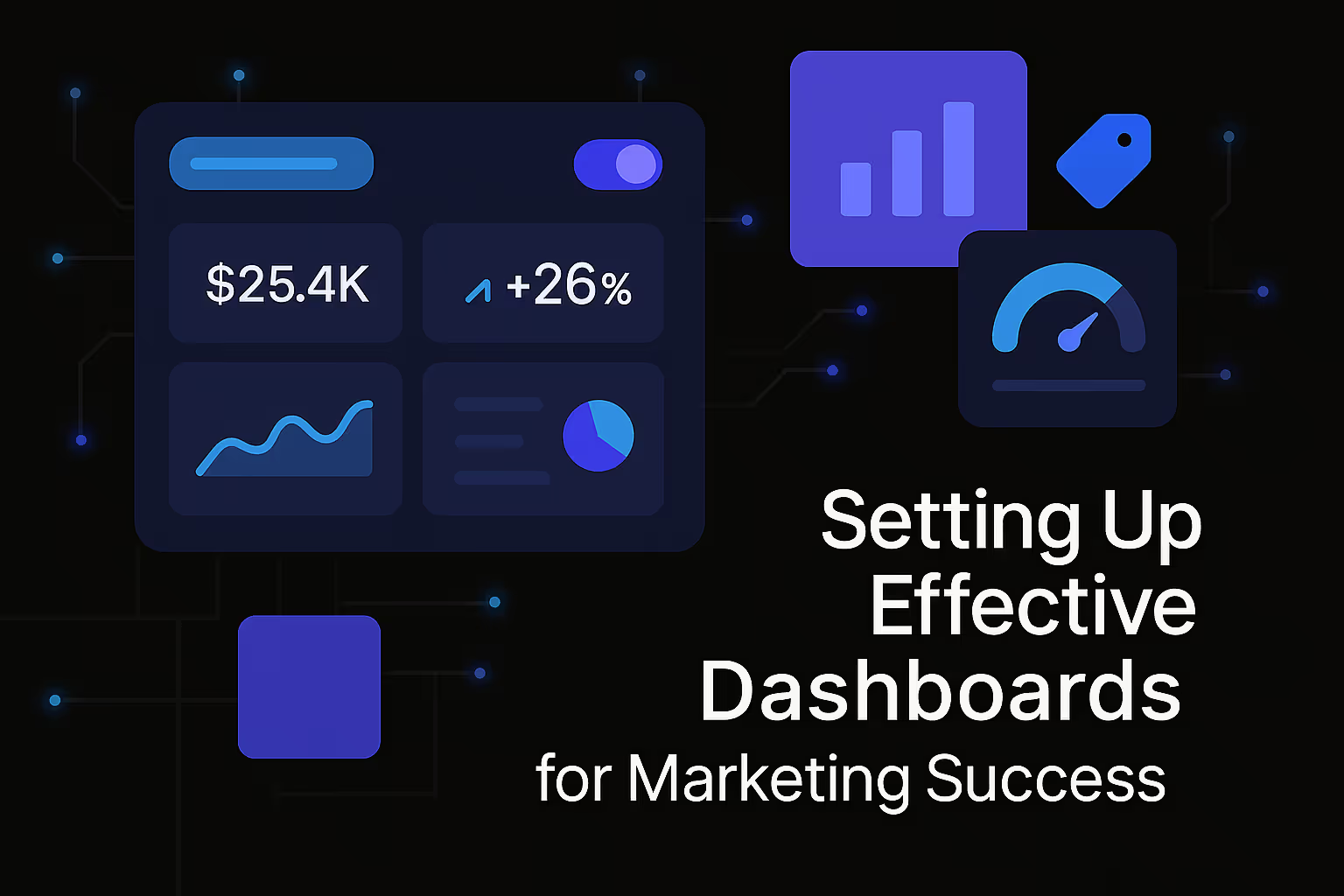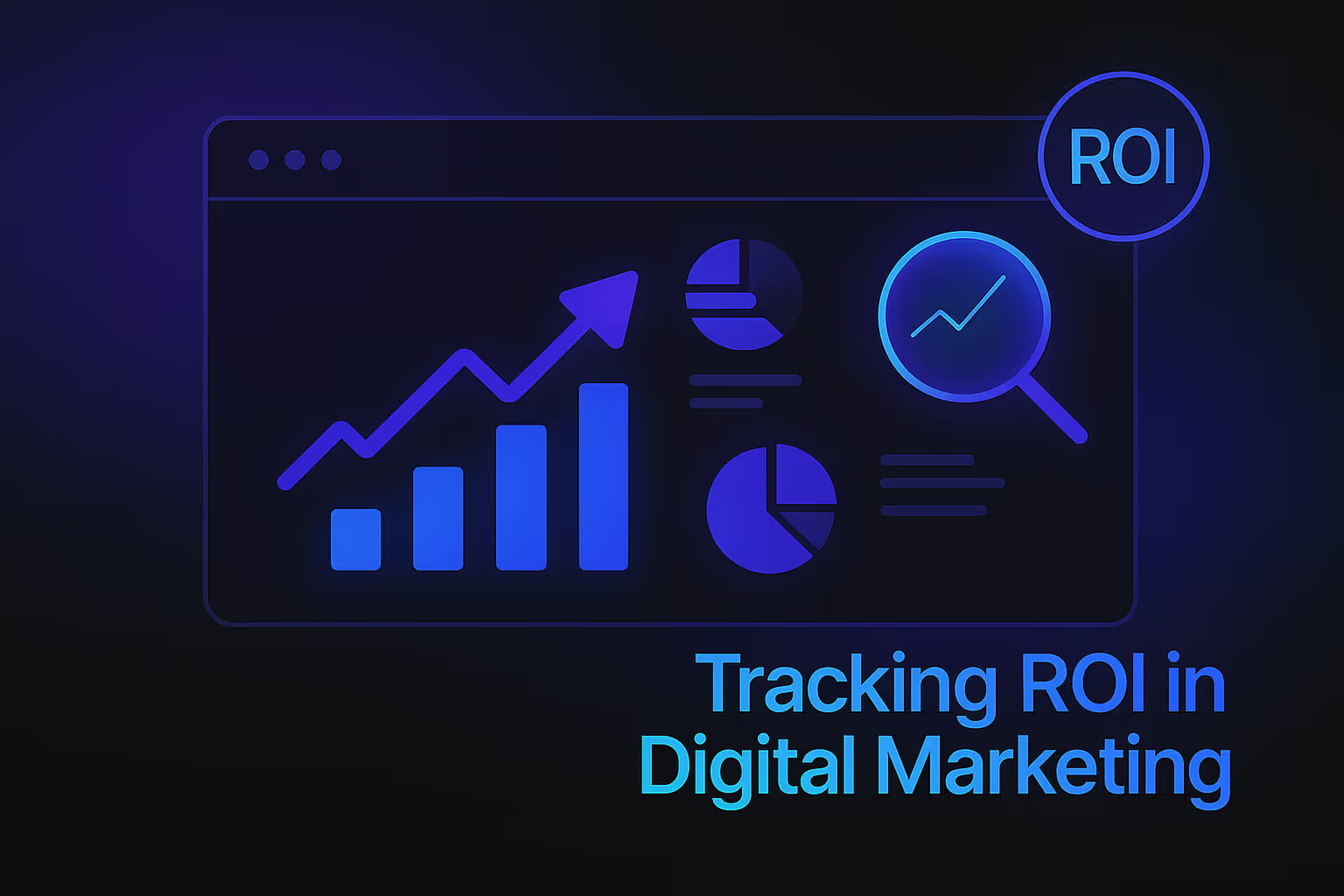Creating Actionable Reports for Your Marketing Campaigns

The Imperative of Actionable Marketing Reports
In the dynamic realm of digital marketing, data is abundant. From website analytics to social media engagement metrics, the sheer volume of information can be overwhelming. However, merely possessing data is not enough; the true power lies in transforming this raw information into actionable insights that drive strategic decisions and optimize campaign performance. Marketing reports, at their core, should serve as more than just a summary of past activities; they should be a roadmap for future success. Without reports that clearly articulate what worked, what didn't, and most importantly, why, marketing efforts risk becoming rudderless, lacking direction and accountability.
The shift from descriptive reporting to prescriptive reporting is critical. Many businesses fall into the trap of generating reports that simply state numbers without providing context or recommendations. A report might show a decrease in website traffic, for instance, but an actionable report would delve deeper, identifying potential causes such as a recent algorithm update, a dip in specific keyword rankings, or a technical SEO issue. It would then propose concrete steps to address these issues, such as revising content strategy, optimizing for new keywords, or conducting a technical audit. This distinction is what separates busywork from genuine strategic value.
Moreover, actionable reports foster a culture of continuous improvement. When marketing teams can easily understand the impact of their efforts and identify areas for enhancement, they are empowered to iterate and refine their strategies. This iterative process is fundamental to achieving sustained growth and maximizing return on investment (ROI) in marketing campaigns. It also ensures that marketing resources are allocated efficiently, focusing on channels and tactics that demonstrably contribute to business objectives. Ultimately, the goal is to move beyond vanity metrics and focus on key performance indicators (KPIs) that directly impact the bottom line.
Core Components of Actionable Marketing Reports
Creating truly actionable reports requires a deliberate approach to their structure and content. It begins with a clear understanding of the audience for the report and the specific questions they need answered. A report for a C-suite executive will differ significantly from one intended for a campaign manager or a content creator. Each audience has different informational needs and will be looking for different levels of detail and types of recommendations.
Defining Clear Objectives and KPIs
Before any data is collected or analyzed, it is paramount to define the overarching objectives of the marketing campaign. These objectives should be SMART: Specific, Measurable, Achievable, Relevant, and Time-bound. For example, an objective might be "Increase organic website traffic by 15% within the next quarter." Once objectives are established, the next step is to identify the Key Performance Indicators (KPIs) that will measure progress towards those objectives. KPIs are not just any metric; they are the most important metrics that directly reflect the success or failure of a specific goal. For the objective of increasing organic website traffic, relevant KPIs might include organic search impressions, organic clicks, average position for target keywords, and bounce rate from organic search.
Focusing on a manageable number of relevant KPIs prevents data overload and ensures that the report remains focused on what truly matters. It's easy to get lost in a sea of data, but a well-structured report guides the reader to the most critical information, enabling them to quickly grasp the campaign's performance relative to its goals. It also makes it easier to track progress over time and identify trends.
Data Collection and Accuracy
The foundation of any robust report is reliable data. This necessitates careful data collection from various marketing platforms, including Google Analytics, Google Search Console, social media insights, email marketing platforms, and CRM systems. Ensuring data accuracy is paramount; incorrect data will inevitably lead to flawed conclusions and ineffective recommendations. Data validation processes should be implemented to cross-reference information from different sources and identify any discrepancies. Regular audits of data collection methods can help maintain integrity.
Furthermore, integrating data from disparate sources into a unified reporting framework can provide a holistic view of campaign performance. This might involve using data visualization tools or business intelligence platforms that can pull information from multiple APIs. The ability to see how different marketing channels contribute to overall goals, or how one channel impacts another, is crucial for developing comprehensive and effective strategies. This integrated approach allows for a more nuanced understanding of the customer journey and the touchpoints that influence conversions.
Contextualizing Data with Insights
Raw data, even accurate data, often lacks meaning without proper context. An actionable report doesn't just present numbers; it interprets them. For instance, knowing that a campaign generated 500 leads is one thing, but understanding that this is a 20% increase over the previous period and that these leads converted at a 10% higher rate than average provides far more valuable insight. This involves comparing current performance against historical data, industry benchmarks, and competitor performance where available. Understanding the why behind the numbers is the essence of actionable reporting.
Qualitative insights are equally important. Beyond the quantitative data, reports should incorporate observations about market trends, competitor activities, changes in consumer behavior, and any external factors that may have influenced campaign performance. For example, a sudden drop in website traffic might be attributed to a holiday period, a news event, or a shift in search engine algorithms. These contextual elements help explain performance fluctuations and inform future strategy. Including anecdotal evidence or customer feedback can also add a human dimension to the data, illustrating the real-world impact of marketing efforts.
Providing Clear Recommendations and Next Steps
The most critical element of an actionable report is the inclusion of clear, concise, and specific recommendations. These recommendations should directly address the insights gleaned from the data and offer concrete steps for improvement. Vague suggestions like "improve content" are not actionable. Instead, recommendations should be granular, such as "update blog post X with new keywords Y and Z, and promote it on social media channels A and B." Each recommendation should be tied to a specific objective or KPI and have a clear owner and deadline, fostering accountability.
Furthermore, reports should anticipate potential challenges and offer contingency plans. What if a recommended action doesn't yield the expected results? Having alternative strategies outlined demonstrates foresight and prepares the team for various scenarios. The ultimate goal is to empower stakeholders to make informed decisions and take decisive action based on the evidence presented in the report. This transforms the report from a mere historical record into a powerful strategic tool.
Best Practices for Crafting Actionable Marketing Reports
Beyond the core components, several best practices can elevate marketing reports from informative documents to truly transformative tools for driving campaign success. These practices focus on readability, relevance, and the ability to inspire immediate action.
Tailoring Reports to Your Audience
As mentioned previously, the audience for a report dictates its content, level of detail, and even its visual presentation. A report for a CEO might focus on high-level financial impact and strategic implications, utilizing executive summaries and dashboards. Conversely, a report for a social media manager would delve into platform-specific metrics, engagement rates, and content performance, offering granular insights for daily optimization. Understanding the recipient's goals and what information they need to do their job effectively is paramount.
Consider the technical proficiency of your audience. Avoid jargon or acronyms that might not be understood by all readers. If technical terms are necessary, provide clear explanations. The goal is to make the report as accessible and digestible as possible, ensuring that the insights are understood by everyone who needs to act upon them. This often means simplifying complex data visualizations and focusing on key takeaways.
Emphasizing Visualizations and Dashboards
The human brain processes visual information much faster than text. Therefore, incorporating compelling data visualizations is essential for making reports actionable. Charts, graphs, heatmaps, and infographics can quickly convey complex trends and patterns that might be missed in raw data tables. Visualizations should be clean, uncluttered, and clearly labeled, enabling quick interpretation. Using a consistent color scheme and iconography can also enhance readability and brand consistency.
Dashboards are particularly effective for providing a real-time, high-level overview of key performance indicators. They allow stakeholders to monitor progress at a glance and quickly identify areas that require attention. A well-designed dashboard acts as a central hub for performance monitoring, reducing the need to dig through multiple reports for critical information. The interactivity of modern dashboards also allows users to drill down into specific data points for more detailed analysis, catering to different levels of interest and expertise.
Establishing a Regular Reporting Cadence
Consistency is key when it comes to reporting. Establishing a regular reporting cadence – whether weekly, bi-weekly, or monthly – ensures that performance is continuously monitored and that insights are acted upon promptly. This consistent rhythm allows for the early detection of issues and opportunities, enabling quick adjustments to campaigns. Irregular reporting can lead to missed opportunities and a reactive approach to problem-solving.
The frequency of reporting should align with the pace of the marketing activities being monitored. For fast-moving campaigns with daily optimizations, more frequent reporting might be necessary. For longer-term strategic initiatives, monthly or quarterly reports might suffice. Whatever the cadence, ensure that the reports are delivered reliably and on time, demonstrating professionalism and commitment to data-driven decision-making. This regular review also provides an opportunity for teams to reflect on their strategies and make data-informed improvements.
Fostering Collaboration and Discussion
An actionable report is not a monologue; it's an invitation to dialogue. Reports should serve as a springboard for discussions among marketing teams, stakeholders, and even clients. Presenting the findings and recommendations in a collaborative setting allows for questions, clarifications, and the collective brainstorming of solutions. This interactive process can uncover additional insights and generate buy-in for proposed actions.
Encourage feedback on the reports themselves. Are they clear? Are they providing the right information? Is anything missing? Continuous improvement of the reporting process is just as important as continuous improvement of marketing campaigns. By fostering an open and collaborative environment around data, marketing teams can truly leverage the power of actionable reports to drive superior results. This collective intelligence ensures that all perspectives are considered and that the path forward is well-defined and understood by all involved.
Integrating with Predictive Analytics
The future of actionable marketing reports lies in their integration with predictive analytics. Beyond simply understanding what has happened, the ability to forecast what might happen based on current trends and historical data provides a significant competitive advantage. Predictive models can help anticipate future campaign performance, identify potential bottlenecks, and optimize resource allocation proactively. For example, predictive analytics might suggest which keywords are likely to trend, or which content formats will resonate most with a specific audience segment in the coming months.
This forward-looking approach transforms reports from historical documents into strategic planning tools. By leveraging machine learning and artificial intelligence, marketing teams can gain deeper insights into customer behavior and market dynamics, allowing them to make more informed and proactive decisions. While descriptive and diagnostic analytics explain what happened and why, predictive analytics moves into what will happen, and eventually, prescriptive analytics will tell us what to do to achieve a desired outcome. This evolution promises even more potent actionable insights.
The Transformative Impact of Actionable Reporting
The transition to creating truly actionable marketing reports is not merely a procedural change; it represents a fundamental shift in how marketing teams operate and contribute to business success. When reports move beyond a simple recitation of numbers and become a catalyst for informed decision-making, the impact is profound and far-reaching.
One of the most significant benefits is the optimization of marketing spend. By clearly identifying which channels, campaigns, and tactics are delivering the highest ROI, businesses can reallocate resources more effectively, eliminating waste and maximizing the impact of every marketing dollar. This data-driven allocation of resources ensures that investments are made where they will yield the greatest returns, directly impacting profitability. Without this clear understanding, budgets can be misdirected towards underperforming areas, leading to inefficiency.
Furthermore, actionable reports enhance accountability and transparency. When objectives, KPIs, and recommended actions are clearly laid out, it becomes easier to track progress and hold team members accountable for their contributions. This transparency fosters a culture of ownership and encourages proactive problem-solving. Everyone involved understands their role in achieving the overarching goals, leading to a more cohesive and productive marketing operation. It removes ambiguity and provides a clear framework for evaluating performance.
Another critical outcome is the acceleration of learning and adaptation. The marketing landscape is constantly evolving, with new technologies, platforms, and consumer behaviors emerging regularly. Actionable reports provide the feedback loop necessary to understand these shifts and adapt strategies accordingly. By quickly identifying what's working and what's not, marketing teams can iterate on their campaigns with greater agility, staying ahead of the curve and maintaining a competitive edge. This continuous learning cycle is vital for sustained success in a dynamic environment.
Finally, actionable reporting strengthens the strategic influence of marketing within an organization. When marketing can demonstrate a clear and measurable impact on business objectives, its value becomes undeniable. Reports that connect marketing activities directly to revenue, customer acquisition, or brand equity elevate the marketing function from a cost center to a strategic growth driver. This elevates marketing to a more prominent position at the executive table, allowing it to contribute more significantly to overall business strategy and direction.
In conclusion, creating actionable reports is not just a best practice; it is an imperative for any marketing team striving for excellence in today's data-driven world. By focusing on clear objectives, accurate data, insightful context, and concrete recommendations, these reports transform raw information into a powerful engine for strategic growth. They empower marketing professionals to make smarter decisions, optimize their campaigns, and ultimately, drive tangible business results. The investment in robust, actionable reporting processes will yield dividends in terms of efficiency, effectiveness, and sustained competitive advantage.
Similar Insights
Stay Updated with Our Insights
Join our newsletter for the latest trends and tips in web development and digital marketing.




